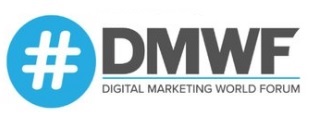
The influencer marketing industry has been subject to great scrutiny in recent years with concerns about trust, transparency and authenticity looming over brands and influencers alike. As a result, consumers have become more skeptical, the Advertising Standards Authority has enforced much stricter rules on the discipline, and social media giants have introduced new measures to keep their platforms free from fraud. It’s no wonder then that micro and nano-influencers have become the industry’s saving grace.
Micro-influencers (with a following between 10,000 and 99,999) and nano-influencers (1,000 to 9,999) are not only bringing the authenticity that brands strive for, but they’re also connecting with consumers on a much deeper level than their celebrity ‘mega-influencer’ counterparts have achieved thus far. The power of the micro-influencer is no illusion either: recent research from the Influencer Marketing Hub and CreatorIQ highlights that those influencers with audiences smaller than 100,000 deliver much higher engagement rates.
So what does the growing popularity of the micro-influencer mean for brands and how can marketers leverage this breed of creator to strengthen their connection with consumers?
The evolution of the influencers
Whilst the influencer marketing discipline was in its infancy, ‘reach’ was the default goal for many brands turning their hands to the new channel. Marketers assumed that the higher the reach, the more valuable the influencer would be. Celebrities and mega-influencers cashed in from brand partnerships and marketers jumped for joy at the huge numbers that populated their reports.
Of course, a huge reach was worth celebrating for certain campaigns and the endorsements of mega-influencers had the potential to work wonders for brand awareness. As the discipline became more sophisticated, however, brands increasingly acknowledged that there was no one way to measure success and that a successful campaign depended on what part of the marketing funnel they were concentrating on. Strategies became more nuanced and it was no longer enough to just aim for a huge reach. Queue the rise of the micro-influencer. Despite having a fraction of the audience of their celeb counterparts, micro-influencers were able to deliver engagement – a metric which drives not only brand awareness, but loyalty and advocacy too.
In addition to delivering high engagement, micro-influencers were a much-needed breath of fresh air for an industry which came under fire for inauthenticity and fraud. As mega-influencers made public blunders by copying and pasting their correspondence with brands into their Instagram captions, and the Fyre Festival catastrophe diminished trust in celebrities even further, micro-influencers delivered authenticity and helped to restore brands’ and consumers’ faith in the discipline.
Making the business case for micro-influencers
It’s clear that micro-influencers have won favour with consumers, and brands are following suit as research shows a 300% increase in the use of micro-influencers since 2016. Marketers spend 47% of their influencer budget on micro-influencers (compared to just 23% for celebrity influencers). The reality is that people trust micro-influencers far more than they do stars, and are far more likely to take notice of a micro-influencer’s recommendation than one made by a celebrity. Of course, brands can achieve amazing things by working with influencers from all parts of the spectrum, but marketers must first prove the ROI of working with micro-influencers whose value is not always immediately apparent. This is where metrics become critical; get your metrics right and the numbers will speak for themselves.
Research showed that influencer budgets were set to grow as nearly two-thirds of brands are now measuring ROI primarily through sales and conversions. COVID-19 will have had an impact on the influencer budget growth but the importance of ROI measurement through these metrics is here to stay. For marketers looking to make their budgets stretch further and achieve more conversions, micro-influencers are invaluable as several will welcome a gift in lieu of a fee whilst still striving to deliver the best content. With the majority of marketers (68%) preferring campaign-based relationships rather than always-on, this gifting arrangement is ideal.
How to make micro-influence work at scale
With the rest of their organisation on board, marketers must then work hard to nurture strong relationships with micro-influencers. These influencers often have a strong brand identity of their own to protect and therefore value creative control rather than endless instruction from marketers. Allowing micro-influencers to have creative freedom, while respecting the brand values and campaign objectives, not only strengthens a brand’s relationship with the influencer, but it also leads to quality content which resonates even more with the audience and ultimately drives better results.
Understandably, it is difficult for marketers to relinquish creative control of a campaign when they are working with micro-influencers at scale. But AI-based tools now exist to make finding the right fit for your brand easy. Gone are the days of marketers having to manually sift through influencers’ profiles and content to determine if a partnership will work. If brands get the fit right from the outset, they will have more confidence and trust in micro-influencers to deliver results.
The increased use of micro-influencers is enhancing brands’ output in a way that mega-influencers sometimes can’t. Far from a passing trend, micro-influencers are here to stay and as companies tighten their budgets even further and look for refreshing ways to connect with consumers, micro-influencers will become more and more integral to campaigns at scale.
Photo by James Pond on Unsplash

Interested in hearing leading global brands discuss subjects like this in person?
Find out more about Digital Marketing World Forum (#DMWF) Europe, London, North America, and Singapore.






Thank you for this amazing article.